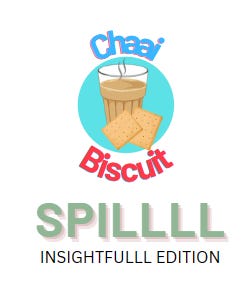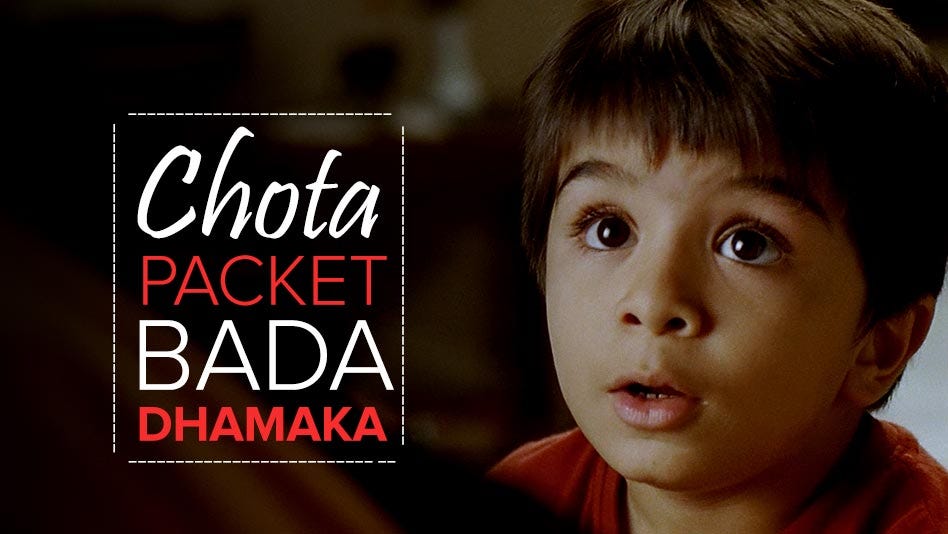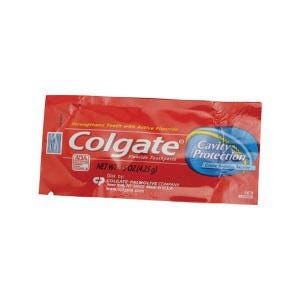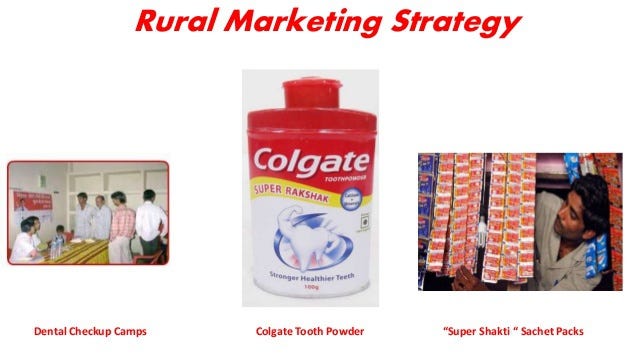Haven’t subscribed to Chaai Biscuit yet? Subscribe now! It’s free!
Happy Saturday everybody!
I hope you had an amazing week because I sure did!
It was a week ago that I discovered that L’Oreal and Kerastase sell shampoo and conditioner in sachets.
Even Maybelline sells foundation in sachets!
And it hasn’t tarnished their aspirational brand image in the Indian market.
In fact, when it comes to premium products, lower price points are actually doing well in India!
This got me thinking-
Low unit packs (LUPs) are driving the Indian FMCG market.
But how did this start?
They say that some of the best inventions are simple products that solve common problems.
And sachet is one such invention.
F.Y.I.
Sachet was invented in India.
But why invent sachets?
1 word, 13 letters
AFFORDABILITY
Years ago, most of the daily-use FMCG products like shampoos and detergents were sold in large packets and bottles.
Hence, they were only limited to those who were well off.
In India, almost 76% of the workforce is working without any employment contract.
These people are daily wage earners.
Approximately, half of these are daily wage earners earning anywhere between Rs 150 to Rs 1000 per day.
Hence, unlike the more fortunate ones, they buy products for daily use (food items, toiletries, etc.) very frequently (either daily or after every 2-3 days).
A daily wage earner cannot and does not spend Rs 300 on a bottle of shampoo but can buy a sachet worth Rs 2 which would last for 2 days.
Sachets were invented to serve this underserved customer base.
Sachet Revolution
The history of sachets
This story dates back to the 70s.
Chinni Krishnan, a rural entrepreneur in India noticed that poor consumers couldn’t afford the “fancy necessities” of the FMCG world- like shampoo and hair oils.
He modified a machine that sealed PVC folders and after multiple iterations, he was able to create a device that could hold a few milliliters of water.
He began selling hair oils, honey and shampoo in the sachets.
Thus began the sachet revolution!
Chinni Krishnan could not market these sachets well and passed away in 1982.
In 1989, his son CK Ranganathan, started manufacturing shampoo sachets in a small shed and hired two chemistry graduates to work on the formulations.
He named the shampoo Chik, priced at 75 paise to Re1 , which targeted the lower middle-class people.
By 1991, they were selling 30 lakh sachets a month!
The idea & the execution were so great that By 2003, Chik had become the second largest national brand in India with 22% market share, just a little below HUL's Clinic Plus.
Their revenues had reached close to Rs 200 crores by 2003.
Wait, what!
Today, sachets make up to 75% of the total shampoo sales in India.
While sachets and smaller packets were made for people residing in the rural parts because of the affordability aspect, people in the urban areas bought sachets.
In fact, by 2010, 80% of the sachet sales came from urban areas.
This is because-
It was like a “try before you buy” scheme for them.
They help users to get close to their aspirational brands without paying a fortune
When people started looking for convenience, “Trial Kits“ and “Travel Packs“ made more sense to these urban consumers.
From wet tissues to premixed instant tea- smaller packaging made people more conducive to experimenting with new, fancy products.
Smaller packs, Bigger growth
Multiple use cases
A few decades after their invention, sachets stormed the market.
Almost every product tried this “think small, in large volume“ technique.
But, did it work for every product?
Here are some success stories of the sachet revolution in India-
Use Case #1-
It was companies like Brooke Bond Tea that launched the “Paisa Pack“ about 70 years ago.
It consisted of a paper enveloped with tea, which could make 1 or 2 cups of tea, and was priced at 1 paisa.
It was mainly targeted at casual daily wage workers, who could feed themselves from their daily earnings.
It sold like hotcakes!Cut to the early 2000s, coffee consumption underwent sachet-isation to increase its low consumption in the Indian market.
Companies extensively promoted 50g packs and cup sizes, which together accounted for 60% of the category sales.
Think about it- it’s not just about the cost or the packet size,
It’s about CONVENIENCE
Instant coffee in a sachet lets tells us exactly how much coffee we’re putting into making one cup of coffee, and exactly how strong our coffee is going to be.Instant tea mix and new varieties of tea and kahwa are penetrating the market.
How?
Sachets and tea bags, of course!
Use Case #2-
90’s kids!
Listen up!
<Sorry for the low res image>
Does this picture make you nostalgic?
It sure does make me nostalgic!
Nestlé launched Chocostick.
Cadbury launched Chocki.
They were priced at Rs 2 a sachet.
Cadbury also launched other chocolates like Gems at smaller packs, and such small packs increased Cadbury’s volumes by 19% in 2008.
Use Case #3-
Paan Masala saw one of the most spectacular successes in the form of sachets.
Gutka/Zarda as well as mouth fresheners were consumed readily in 1gm-5gm (even though the unit cost of the sachet came to be twice of that pack).
And because of the high consumption of Gutka sachets, there was littering everywhere!
So much so that the Supreme Court had to ban the sale of gutka and pan masala in sachets.
But did we comply?
WE DID NOT!
Products like antacid powders and cough lozenges, smaller packets of biscuits and even smaller packets of wheat- all of these witnessed incredible success in the Indian market.
Not such a good use case #1
In commodities like jam and milk powder categories, 500gm packs sold more than their sachet counterparts.
Not such a good use case #2-
Colgate also took a dive into the wave of sachets.
It introduced a toothpaste in sachet form, not targeted at lower income segment, but towards children.
Ultimately, smaller tubes of toothpaste worked!
They gained popularity and are still very much popular in hotels and airline travel packs.
Toothpaste sachets are still sold in a few parts of the country, though.
Maybe because toothpaste is a daily-use product and so a sachet makes less sense.
Similarly, sachet packs of hair oils are popular only in some parts of India.
BUT
The most impactful success story of sachet marketing has to be introducing oral hygiene.
Colgate introduced oral hygiene in rural India by selling toothpowder since it seemed more in line with the rural mouth washing habits at that stage than toothpaste.
This is because people in villages used charcoal powder, brick powder, salt powder and other substitutes to maintain their dental hygiene.
If, on the other hand, Colgate had launched toothpaste sachets in villages, it would’ve been counter-productive for 2 reasons-
It would have required more money on toothpaste and toothbrushes
(Rural India- lack of affordability)Using toothpaste meant changing their mouthwash habit
Low unit packs (LUPs) have been driving India’s FMCG sector for years!
Why?
Easier transportation & distribution
Easier to get first-time consumers to try certain products
In fact, when the pandemic hit, these LUPs were the reason FMCG products witnessed profits and growth.
It was in 2020 that HUL introduced Horlicks and Boost in small packs, and it was huge success for the 3rd quarter.
Learned something new? Enjoyed reading?
Do consider sharing it with your friends and family.
Here’s a POP quiz for you-
What’s more economical- buying shampoo sachets or buying a shampoo bottle?
And why?
Let me know.
Have a fabulous week ahead!
Till then
Toodeloo!













👍well written! But these ' convenient' plastic sachets are the worst thing for the environment unfortunately. :(